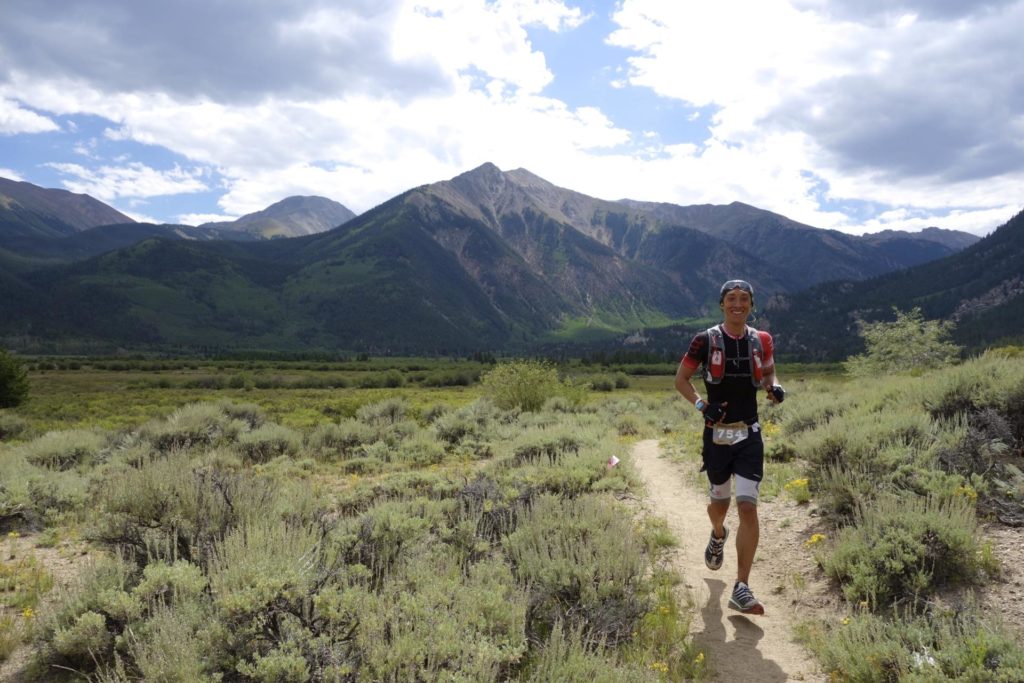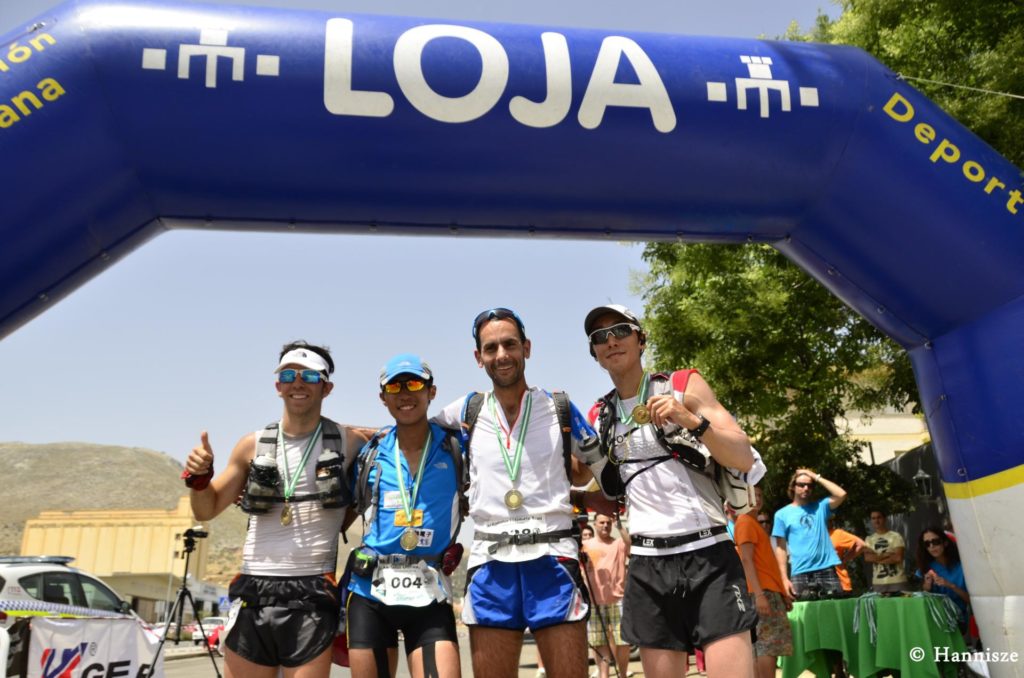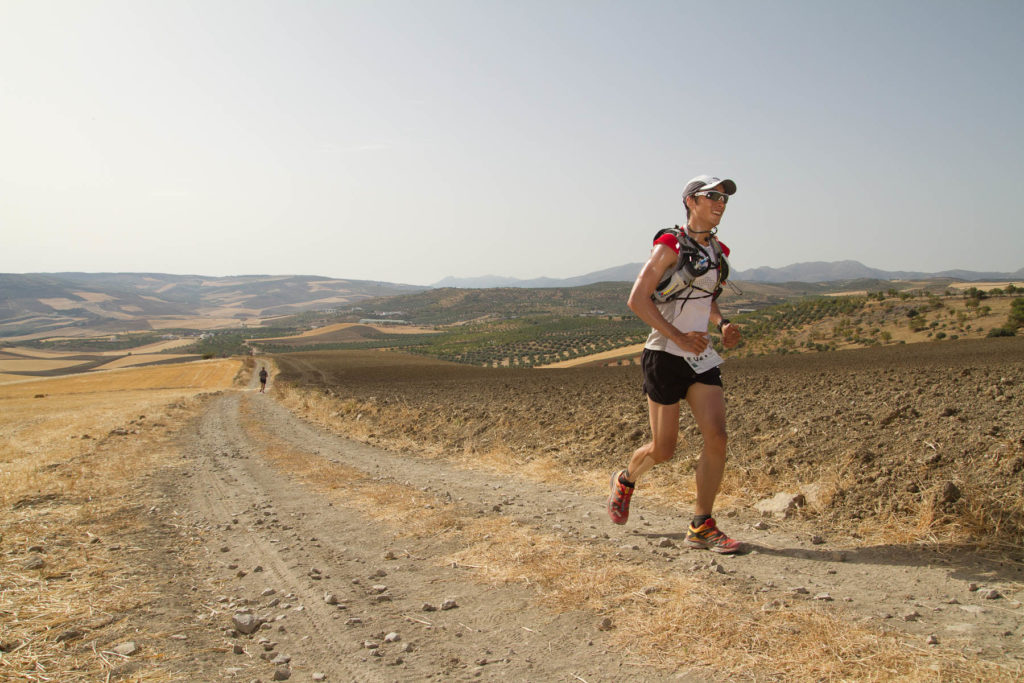Over the past two years, Minakami-based trail runner Timo Meyer has made a name for himself on the international trail running scene. Outdoor Japan’s Robert Self sits down with Timo to talk running trails, training and racing overseas.
Your performance in August (finishing 6th) at the Leadville Trail 100 Mile Race in Colorado caught the attention of the trail running world. Tell us about your preparation for that race.
Since the LT100 course is all high altitude (lowest point 2,800m; highest point 3,840m), I knew I needed plenty of time for acclimatization. I traveled to Colorado four weeks prior to the race so my body could gradually adapt to the altitude. My training was a mix of running and hiking; the long hikes in higher altitude and climbing a few “14-ers” (14,000-foot mountains) especially helped give my body time to adjust.
Since it was just my second 100-mile race, I increased my weekly training volume and ran up to 210 kilometers in the weeks before tapering off, following the rule to train low and live high. The long runs (50K+) and more intense runs I did in lower elevation in the Boulder area (1,500m).
You won the Al Andalus Ultimate Trail Race in Spain last year, as well as the Sunrise to Sunset Ultra Marathon in Mongolia two years ago. Overall you seem to enjoy entering races outside of Japan.
I started trail running and racing in Japan, which I really enjoy, but trail running for me goes hand-in-hand with discovery, adventure and meeting other like-minded people. I love traveling to other countries and joining races. I haven’t entered a race twice yet.
Another reason I prefer races overseas is the atmosphere is generally more fun and friendly, compared to a more serious and competitive atmosphere at Japanese races. Don’t get me wrong; I love to compete, but having fun while being out there with several hundred fellow runners and enjoying the trails and scenery is as important to me as the competition.
What’s your typical training week?
My typical weekly volume (distance) is 100-150 kilometers but, depending on the type of race I enter, my training weeks vary quite a lot. I generally run daily and take a day off or do very easy runs if I feel tired. Weekdays I usually do one speed workout (intervals or tempo) and one hill workout on road or treadmill.
On the weekends, I try to go out on the trails and do long runs between three and six hours, often back-to-back. I also like to do double sessions, a harder/longer session in the morning and easy runs in the afternoon or evening. It’s easier to accumulate miles and is less stress on your body. I don’t do much cross training but try to spend two-to-three hours per week in the gym doing core and full body exercises.

You seem to do a lot of road and speed work. Is roadwork essential to becoming a great trail runner?
I started running on road and running marathons. I wouldn’t say roadwork is essential for trail running. There are a bunch of elite runners out there such as Kilian Jornet, Timothy Olson, Ruby Muir and Anton Krupicka who, as far as I know, never train on road. But I think the main benefit, which you gain from road running, is speed, increased leg turnover and running for longer stretches at a steady pace.
In Japan, the trails tend to be more technical and less runnable, so if you only train on trails, you might work on your strength, technique and agility, but speed is also a major factor nowadays if you want to place high at a trail race. There are a few high rising roadrunners winning races such as Max King and Sage Canaday, setting new CRs (course records) in races they enter. Their PBs (personal bests) on road marathons is in the range of two hours, 15 minutes.
How much time do you spend training in Japan these days?
As much as I love traveling and discovering new places to run, I am also a person who likes continuity and routine. If you travel a lot, it is difficult to find a steady training rhythm. I try to train in Japan when I prepare for a bigger race. This year I will most likely end up training three-to-four months in Japan.
You use Minakami and Tanigawa as your bases while here. Can you tell us about some of your favorite courses and trails in the area?
My favorite road course is a 30-km. loop on hilly roads with almost no traffic. I love this course since it has close to 1,000 meters in elevation, and I can run it throughout the year. My favorite trail course is a 25K loop around Tanigawa, starting at the Doai Station with a steep technical climb up to Mt. Shiragamon (1,720m) and running along the ridgeline with spectacular views to Mt. Asahi. It’s not an easy course though; it can be quite windy up there, and there are no exit points; therefore starting early is recommended. The loop takes seven hours for an average trail runner.

I love running in Tanigawa; once on the ridgelines it is some of the most spectacular scenery around Kanto. But I’ve never found a good descent trail for running. Any suggestions?
For nice steady downhills, I recommend Minakami’s Norn Ski resort; the ski slope itself is too steep to run fast, but you can fly down the switchback forest trails which go alongside the ski slope. There are also nice downhill trails in the Naeba Ski Resort area if you climb up Mt. Tairappyu (1,984m), and the Mt. Akagi area is nice. Both are about 30-40 minutes by car from Minakami.
How do you deal with the inevitable injuries that come with training at your present intensity?
Although I have increased my training volume this year compared to previous years, I am fortunate that I have been less injury-prone so far this season. Besides rolling my right ankle at the The North Face Australia in May this year which caused my first DNF (did not finish), I have only had small issues with my IT-Band, shin and Achilles tendon.
Of course injuries occur, and it can be a setback both physically and mentally, often the main reason why runners quit. However I believe there are ways to minimize injuries, by doing body care, stretching, strength training and self-massages (a foam roller, my travel buddy). It’s also very important to work on your running technique and balance exercises, since injuries often occur because of muscle imbalances. If I have issues which I can’t eliminate on my own, I seek help from experts. ART (Active Release Technique) and acupuncture are my main treatments and highly recommended.
You have only been trail running for about four years, making an incredible ascent in this sport. What advice can you give runners who would like to follow in your footsteps?
Yes, although I started to enter races in 2011 (third season this year) I did my first trail runs about four years ago. Before that, I had been running two or three road marathons per year for about three years, but there was no real passion. I did it more for fitness, and the marathons I entered were mainly for motivation and having a goal.
Trail running turned into a big passion of mine. I love what I do, so the first advice I can give is to create passion for the act of running. Fun, love and joy come hand-in-hand with passion. The second advice is be patient and plan long term; it takes time to build a solid fundament for running. You might be able to run a marathon (with a lot of suffering), with three months of training, but it takes much more preparation and time to get ready for a “hundred miler.” So train with patience, give your body time to recover and adapt slowly to long distance running, and you will reach your goal step-by-step.
The last important advice is to train smart. Many runners get caught and settle into a boring, repetitive training pattern accumulating too many empty miles and then wonder why there is no progress. Trail/Ultra running requires a quite complex skill set—endurance, strength, speed, balance, proper nutrition—and your training should be diverse accordingly.
It is still a young sport and there are many theories on “how to train properly for an ultra” out there. Educate yourself on all ends, follow elite runners and see how they train (you can find a lot of training logs of elite runners online), experiment and find what works for you best (e.g. high/low mileage, nutrition, cross-training), and adjust and modify your training plan to give your body new impulses. Don’t settle into mediocrity; be smart with your training.
At Leadville, what was going through your mind as you realized you were going to finish in front of some legendary ultra marathoners?
Being part of Leadville 100, a race I read about in “Born to Run” several years ago, was exciting enough, but to be competing with the likes of ultra marathon legend Scott Jurek and other elite runners such as Ryan Sandes, Ian Cordes and Nick Clark was unreal. My goal was to run my own race and cross the finish line, if possible sub-20 hours. At the half point at Winfield aid station, I realized for the first time I might be able to finish top 10, which was very exciting. But there was still a long way to go, so finishing and not blowing was my primary goal. I stayed patient and ran my own pace.
Through defensive running, my energy level after 100 km. was quite high. This paid off since a few other runners in the front were struggling, Jurek included. Leaving the last aid station—with about 20K left in the race—I was in eighth position and more than happy with that position as I’d secured a sub-20h time. However I could feel another runner chasing me, so my pacer and I decided to speed up and luckily we were able to improve my position, in the last leg passing Jurek with approximately 5K remaining in the race. We shook hands while running, a very special moment in my running career. When I crossed the finish line, it was surreal.





